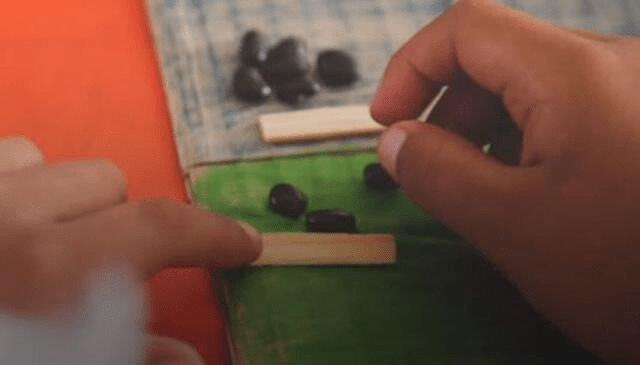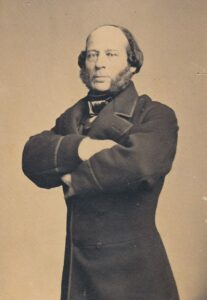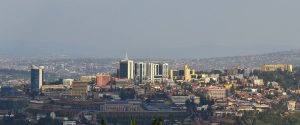Imagine learning math in ancient times where nature and the environment were the only resources for learning. Before using calculators and textbooks to learn math, ancient civilizations had to use what was available to them in their environment. Ancient civilizations such as the Mayans had a well-developed math system, but did not have the complex methods that we use today, such as calculators and textbooks. Although the Mayan mathematical system seems like something merely from the past, its importance still prevails today. Students today are learning math by using the Mayans’ math system. Learning math through the ancient ways of the Mayans proves to be effective even today.
The Mayans created the zero numerical symbol and based their math on a base-20 numerical concept. The use of the base-20 system most likely arose from the ancient people using their fingers and toes to count.1 In their numerical system, the Mayans used three symbols that were represented by objects in their environment. The first symbol was a dot, which represents the unit of one. The second symbol used was the bar, which represented 5. Once there were four individual dots, they were then combined to form a bar. The last symbol that was used was the zero.2

The environment and agriculture inspired the Mayan’s way of doing math. The Mayans relied heavily on agriculture and their environment so they incorporated what was available to them into their math system. The system the Mayans used for teaching mathematics was through the use of concrete and representational materials. To represent the dot, a small rock, bean, or seed was used. A bar was represented by sticks or twigs. The zero was represented by a shell.3

The approach Mayans use in mathematics has many benefits and advantages. Through the use of concrete objects, students are able to use manipulatives in order to do math. The use of this model helps put an abstract concept like math and simplify it into a concrete concept.4 This system does not use numbers when doing math but instead manipulates objects that represent the numbers in order to perform an operation. Through the use of the Mayan mathematical concepts, students are able to do math in a tangible way that is simple and fun. Doing math using simple processes prevents students from having to memorize extensive amounts of information.5
Throughout the years, math shifted from the Mayan mathematical system to the mathematical system we use today. Colonization of the descendants of the Mayans by Spanish conquistadores and missionaries greatly influenced and shifted their unique practices, such as mathematics. Throughout the years Spanish rule influenced and altered the Mayan civilization. One of the Spanish conquistadores that caused the greatest change to the Mayan society was Diego de Landa. In 1541, Diego de Landa requested to be sent to the New World as a missionary. Diego visited the great cities of the Maya in order to gain insight about their history and culture. However, when Diego came across practices he did not agree with, he took drastic measures to enforce changes in the Mayan society. Diego was determined to enlighten the Mayans, even by force, by gathering their documents and burning them.6
The methods used by the Mayans more than 2,000 years ago was rediscovered by Luis Fernando Magaña, a professor of physics at Mexico’s National Autonomous University. Through Magaña’s interest in the Mayan numerical system, he was inspired to share his findings with others. Magaña would introduce and educate administrators and teachers in the Mayan system to help him reach his goal of implementing this new math system in schools.7
In 2010, the Mayan mathematical system was adopted into math teaching programs in schools located in Yucatan and in Indigenous zones. The integration on teaching math using the Mayan mathematical system has not been formally adopted into the math curriculum, but more teachers are using it to teach math in their classrooms.8 Magaña personally trains the educators himself, to ensure the quality of the Mayan mathematical system being properly taught to students.9
Using the mathematical system of the Mayans has brought about good results. In 2011, a year after the Mayan mathematical system was first used in classrooms, students have shown better math results in preschool and elementary.10 The Mayan mathematical system not only brings academic benefits but also helps students in Yucatan and Indigenous zones to learn math like their ancestors.11
- J J O’Connor, and E F Robertson, “Mayan mathematics,” MacTutor History of Mathematics, (2009), http://www-history.mcs.st-and.ac.uk/HistTopics/Mayan_mathematics.htm. ↵
- Salem Press Encyclopedia Of Science, 2013, s.v. “Central American mathematics,” by Judith E. Beauford. ↵
- Rafael Lara-Alecio, Beverly J. Irby, and Leonel Morales-Aldana, “A mathematics lesson from the Mayan civilization,” Teaching Children Mathematics 5, Professional Development Collection, no. 3 (1998): 2-3. ↵
- Rafael Lara-Alecio, Beverly J. Irby, and Leonel Morales-Aldana, “A mathematics lesson from the Mayan civilization,” Teaching Children Mathematics 5, Professional Development Collection, no. 3 (1998): 2-3. ↵
- L.F. Magana, “The Ludic and Powerful Mayan Mathematics for Teaching,” Procedia – Social And Behavioral Sciences 106, International Conference on New Horizons in Education, no. 4 (2013): 2930. ↵
- J J O’Connor, and E F Robertson, “Mayan mathematics,” MacTutor History of Mathematics, (2009), http://www-history.mcs.st-and.ac.uk/HistTopics/Mayan_mathematics.html. ↵
- J J O’Connor, and E F Robertson, “Mayan mathematics,” MacTutor History of Mathematics, (2009), http://www-history.mcs.st-and.ac.uk/HistTopics/Mayan_mathematics.html. ↵
- L.F. Magana, “The Ludic and Powerful Mayan Mathematics for Teaching,” Procedia – Social And Behavioral Sciences 106, International Conference on New Horizons in Education, no. 4 (2013): 2929. ↵
- J J O’Connor, and E F Robertson, “Mayan mathematics,” MacTutor History of Mathematics, (2009), http://www-history.mcs.st-and.ac.uk/HistTopics/Mayan_mathematics.html. ↵
- L.F. Magana, “The Ludic and Powerful Mayan Mathematics for Teaching,” Procedia – Social And Behavioral Sciences 106, International Conference on New Horizons in Education, no. 4 (2013): 2930. ↵
- Salem Press Encyclopedia Of Science, 2013, s.v. “Central American mathematics,” by Judith E. Beauford. ↵



39 comments
Pedro Lugo Borges
Its interesting to think about how different cultures used different methods to describe numbers and how it influences how we still learn how to count in that region, for example i grew up in the Yucatan were its very common to count objects by groups of five like you pointed out in the article, or hearing someone speak to an indigenous workers in mayan numbers. For those who are curious the translations for 1, 2 , 3, 4 ,5 ,6 ,7, 8, 9, 10 in the Yucatan dialect of mayan is: hun, can, os, kam, ho, wak, usuk, wasak, bolom, and lahun respectively.
Kimberly Parker
When reading this article, I was very surprised to find out that the method of math that the Mayans used was actually very simple instead of being complex like I would have thought. Although their method seems primitive it was probably very ground breaking for the Mayans. Thinking about all of this, makes me wonder how it was that they learned this method. They didn’t have to memorize so much information simply because of the method that they used, and that was really impressive.
Jose Chaman
Great article! The connection between the images and the story is really accurate. I find really interesting that people were really interested in learning as their Maya ancestors, this is a high anthropological goal because it keeps alive an ancient practice. In addition, it is impressive how advance was the understanding of Math by the Mayas, and also that they came up with 0!
Audrey Uribe
very captivating article. Its wild to think that the symbols were not yet thought of but math was still durable without them! In a way, it’s brilliant that they could comprehend and even do math universally between one another. Maybe if the Mayans math had stuck, it would be more simple to use. Crazy to think some sticks and twigs and some shells is all that was needed.
Edith Santos Sevilla
The story of math that came from the Mayans is very different than what I was expecting, the method that they use is very simple and I would have thought that it was going to be different, maybe not necessarily more complex, but indeed something different. It is very interesting how a method that was invested such a long time ago, is still helping students, young kids in elementary to get ready and learn math. Besides the math perspective of this, something that I was surprised about was Diego de Landa. I have studied some history about the conquistadores and how they affected the society and changed them, but I had not heard of the name Diego de Landa, which is very interesting how one person can create so much change.
Roberto Rodriguez
This article/topic is a perfect example of society today taking for granted the simple things in life. I mean it may seem primitive and the solution to teaching children math may seem obvious to us, but this was probably very ground breaking for the Mayans. It makes me wonder how they learned before this method, once again it is a primitive method, but it just makes me wonder what was the even more primitive method that shaped the thinkers of the next Mayan generation. This method kind of reminds me of tally marks, very simple to teach and understand but effective.
Vanessa Sanchez
Amazing article I truly enjoyed the pictures and the way the story connected. Its fascinating to see how certain things come to be and something as simple as math. See hoe different things are in different cultures. Its amazing how they didn’t have to memorize so much information simply because of the technique. It is amazing to see how they got to live a small part of what Mayans use to be. Its amazing how far things have come and just to think and see where they started from is impacting.
Makenzie Santana
I find this article fascinating. It really is amazing the way ancient Mayans used concrete objects to represent the numbers since the math they learned didn’t exactly involve numbers. They way they used this method to do simple math and avoid having to memorize so much information is extremely smart and convenient for the circumstances they lived in back then without the technology advancements.
Joshua Garza
This is such an interesting article. Its so cool thinking that the people in this article were actually somewhat living and figuring things out like the ancient Mayans once did. Its always fascinating to me to remember just how smart they were at a time where math wasn’t all that advanced or figured out. They came up with the place holder 0 too.
Yazmin Garza
I sometimes forgot how smart the ancient people of the Mayan empire had to be to figure out math without any type of previous knowledge. They had to really smart to come up with the concept of zero that was integrated into their math system, which is something that many ancient civilizations couldn’t do. Math has always been my favorite subject and when I was little I remember that we did a short chapter on the way the Mayan did math and we tried the system out ourselves, and it is very similar to modern day simple math.